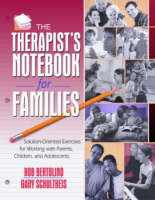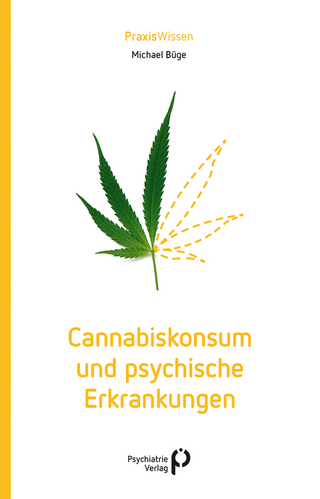
The Therapist's Notebook for Families
Haworth Press Inc (Verlag)
978-0-7890-1244-9 (ISBN)
- Titel erscheint in neuer Auflage
- Artikel merken
Help your clients facilitate positive changes with these innovative therapeutic exercises!The Therapist's Notebook for Families empowers mental health professionals with clear, practical, easy-to-use therapeutic exercises for working with parents, adolescents, children, and families. These exercises will improve your effectiveness with clients, helping them to explore possibilities, find solutions, and create change in spite of difficult problems. The current climate in the mental health field calls for professionals to be both effective and accountable. This book will help you to work more effectively and more respectfully with clients with an array of exercises designed to facilitate change processes. These activities will help you and your clients in:
establishing goals and projected outcomes
changing unhealthy views
improving on their current style of action/interaction
identifying and amplifying change
managing setbacks
ending therapy
This volume include suggestions for the best ways to use the exercises as well as descriptions of the purpose of each activity. The Therapist's Notebook for Families will prove invaluable in your work with families!
Part I: Getting Clear on the Change You Want 1. Utilizing Collaboration Keys. 2. Exploring Clients’ Relational Preferences. 3. Defining the Problem: Determining What Needs to Change. 4. Clarifying Preferred Outcomes: How Will We Know When Things are Better? 5. The Crystal Ball. 6. The Time Machine. 7. Defining In-Between Change: How Will I Know When We’re Making Progress? 8. Using Video-Talk. 9. Scaling Goals, Preferred Outcomes, and Signs of Change. 10. Exploring Clients’ Theories of Change. Part II: Changing the Viewing of the Problem 11. Changing Language Through Acknowledgment and Possibility. 12. Future Talk: Acknowledgment and a Vision for the Future. 13. Acknowledging Efforts. 14. Lenses. 15. Sticks and Stones May Break My Bones but Words Can Hurt Too! Using Solution-Talk. 16. Parents’ Mission. 17. Adolescents’ Mission. 18. Thinking Out of the Box: Expanding Creativity. 19. Controlling and Letting Go. 20. One More One More. 21. Teach Your Children. 22. Who Are You? Exploring the Qualities Within. 23. Everyday Is an Exception. 24. Searching for "Counter" Evidence. 25. One of These Things is Not Like the Other. 26. How Else Might You See It? Exploring Alternative Perspectives. 27. At the Movies. 28. How Come Things Aren’t Worse? 29. Standing Up to Problems. 30. Changing Criticism to Requests or Demands. 31.The Big Picture. 32. Why Am I Here . . . and Not on Mars? 33. What About the Future? Part III: Changing the Doing of the Problem 34. Invitations to Accountability: Separating Feeling and Doing. 35. Identifying Unhelpful Patterns. 36. Identifying Solutions Keys by Changing Patterns. 37. Changing Patterns in Relationships. 38. Go with the Pattern. 39. On and Off. 40. Do Something Different. 41. The Unified Front. 42. Change Some Aspect of Context. 43. Something Different, Something New, Something Unpredictable, Something Else to Do. 44. Follow the Script. 45. Identifying and Utilizing Past Solutions and Successes. 46. How Does the Problem End or Start to End? 47. How Come Things Haven’t Bottomed Out? 48. Tracking Solutions. 49. What Do You Do Well? 50. What Worked? 51. Parents’ 911. 52. How About a Ritual? 52. Chores. Part IV: Changing Aspects of Context 53. What’s in a Problem? Identifying Contextual Influences. 54. Tapping Resources: Creating a Personal Inventory. 55. How Am I Supposed to Be? Challenging Unhelpful Influences. 56. Those Who Know Me Best. 57. Have You Ever . . . ? 58. Exploring Family Solutions. 59. Is It Inherited or Learned or . . . ? 60. Who Am I Like? Speculating About My Parents. 61. Reviving Your Soul: Tapping Spiritual Energy and Resources. 62. Who’s Driving the Bus? Promoting Accountability. Part V: Keeping the Ball Rolling 63. Keeping an Eye on Change in Between Sessions. 64. Where’s the Evidence? 65. Identifying and Amplifying Change. 66. What Is It About You? 67. Is It Enough? Reviewing Change. 68. Recovering from Setbacks. 69. Managing Ups and Downs. 70. The Scrapbook of Life.
| Erscheint lt. Verlag | 12.8.2002 |
|---|---|
| Verlagsort | Binghamton |
| Sprache | englisch |
| Gewicht | 660 g |
| Themenwelt | Medizin / Pharmazie ► Medizinische Fachgebiete ► Psychiatrie / Psychotherapie |
| Sozialwissenschaften ► Soziologie | |
| ISBN-10 | 0-7890-1244-8 / 0789012448 |
| ISBN-13 | 978-0-7890-1244-9 / 9780789012449 |
| Zustand | Neuware |
| Haben Sie eine Frage zum Produkt? |
aus dem Bereich



